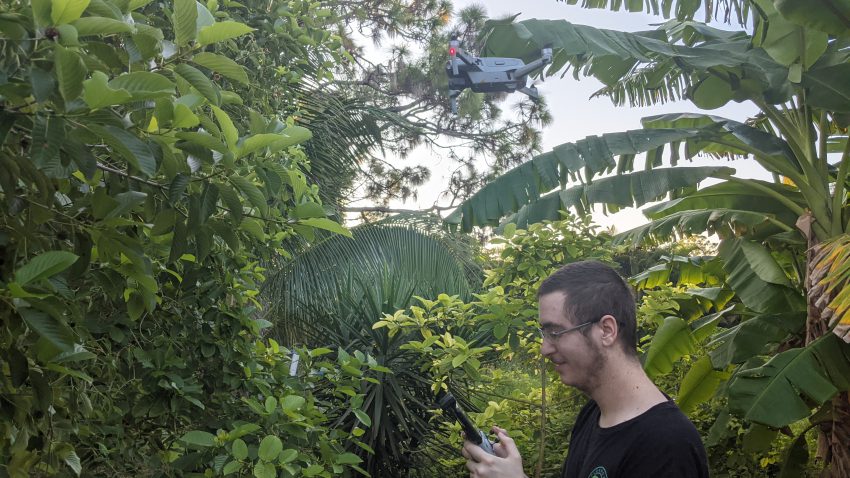ECO-FARMING AND KRATOM

ECO-FARMING AND KRATOM
ECO-FARMING AND KRATOM – Kratom trees, known scientifically as Mitragyna speciosa, are tropical evergreen trees in the coffee family. They grow naturally in rainforests throughout Southeast Asia. The leaves of the kratom tree have both traditional and modern significance for homeopathic medicine.
Kratom was first introduced to Western society in the 1990s but only took hold as an ethnobotanical supplement in the last decade. One potential draw for kratom’s recent rise in popularity? Sustainable, ecological farming practices, otherwise known as eco-farming.
Sustainable farming practices are vital for the continued health of our global ecosystems, including international food economies. Because of this, kratom and eco-farming practices could set the international gold standard for responsible agriculture.
And if this feels like a lot of environmental mumbo-jumbo, don’t worry! Eco-farming can be broken effectively down into seven principles, and they’re quite simple:
The Seven Basic Principles of Eco-Farming
- Crop Sovereignty: people, not corporations, should control crops like food and herbal medicines; producers and consumers should determine how our crops are produced.
- Reward Rural Livelihood: eco-farming creates healthy rural development; this, in turn, creates crop security and fights poverty.
- Smarter Agriculture: sustainable farming practices can create higher yields over time.
- Biodiversity: opting for diverse crops instead of monoculture crops like corn or soy can protect nature; biodiversity allows people to use seasonal plants at cheaper costs.
- Sustainable Soil: ecological farming creates healthier soil; eco-farmers often refrain from chemical inputs like insecticides, which can contaminate the environment.
- Pest Protection: eco-farming creates pest-resistant soil, allowing farmers to control pests and weeds without chemical inputs.
- Food Resilience: diverse and resilient crops, not monoculture crops, offer more protection from natural resource-related market changes; this creates stable crop economies, both locally and transnationally.
Think of this as your guide to eco-farming. If an agricultural practice meets these guidelines, consider it beneficial to eco-farming. Now, let’s see how kratom farming stands up to these seven principles!
Do Kratom and Eco-Farming Go Hand-in-Hand?
Eco-farming sounds great in theory: farmers and consumers hold more power over the food chain, and farming practices that could potentially contaminate the environment are abandoned in favor of ecological farming techniques. Greenpeace even calls eco-farming the combination of “modern science and innovation with respect for nature and biodiversity.”
However, critics say that eco-farming has to mesh well with reality. If ecological farming practices don’t make sense economically, they should be modified in favor of a more profitable system.
But remember when we said kratom could set the gold standard for eco-farming practices? This plant is a shining example of how to incorporate eco-farming into the modern agricultural fold. In fact, kratom meets all seven principles of eco-farming– not in theory, in reality. Here’s how:
(1) Kratom Allows for Crop Sovereignty
Kratom Spot sources their kratom from small family farms throughout Southeast Asia. In regions like Indonesia, kratom trees grow wildly in the rainforests and jungles. These tropical reserves offer rich, nutrient-dense soil without the need for chemical inputs like soil supplements or herbicides.
Here, kratom farmers and consumers control the supply, not corporations. The people have farmed kratom trees for generations. With that experience, they’ve learned how to use eco-farming practices in a sustainable, farmer-controlled setting.
(2) Kratom Rewards Rural Livelihood
The natural kratom trees in Southeast Asia bring employment opportunities, ecological advancements, and global trade opportunities to rural farmers in Southeast Asia. Not only do kratom consumers overwhelmingly support eco-farming practices, mass-farming techniques might yield lower-quality kratom. As such, kratom farmers can maintain their traditional farming practices in an era of technological agricultural advancement.
(3) Kratom is Smarter Agriculture
This is where kratom sets a decisive eco-farming example. Kratom is farmed using a variety of sustainable techniques, such as decentralized cultivation and selective pruning.
Decentralized cultivation means this: kratom farming does NOT rely on clear-cutting forests for farmland. Instead, kratom farmers use both wild growth and small, family farms to supply kratom leaf harvests. This allows native regions to maintain local biodiversity while still profiting from a major agricultural trade product. Biodiversity is vital to Southeast Asia, a region that accounts for an estimated 20 percent of all biodiversity on the planet!
Selective pruning, much like decentralized cultivation, allows for sustainable farming techniques that do not degrade local environments. It works like this: knowledgeable kratom farmers harvest only the leaves needed for the harvest. They do not harvest entire kratom trees at once. Selective pruning has many benefits:
- Only the mature leaves of the desired vein color are harvested.
- The kratom tree is left healthy and unharmed, continuing to grow new leaves.
- The kratom tree is left with the ability to feed new growth and existing growth, creating higher yields over time.
(4) Kratom Promotes Biodiversity
We’ve already mentioned that kratom aids in the maintenance of biodiversity in Southeast Asia. But what else defines the relationship between kratom farming and biodiversity?
For starters, because kratom trees are often grown using decentralized cultivation, wildlife habitats are maintained. Decentralized agriculture, an eco-farming practice, allows us to preserve the diverse habitats of the rainforests. Taken from a past Kratom Spot article:
Animals are part of a delicate natural balance that has already been disrupted in some areas by human encroachment.
But preserving biodiversity goes beyond animal habitation. Biodiversity can shield waterways from nitrogen pollution, improve air quality, and even support human health in various ways.
(5) Kratom Contributes to Sustainable Soil
The rainforests of Southeast Asia do not need chemical fertilizers, insecticides, herbicides, or any chemical inputs that risk damaging soil health. Yes, we know that some chemical fertilizers are “safe” when used properly in industrial settings. However, they must also be removed from consumer-grade products before sale. This isn’t always the case. Furthermore, these toxic chemicals can leach into groundwater and create rippling environmental effects.
But when you practice eco-farming, you don’t even need to worry about chemical inputs– they’re not there! Instead, the soil naturally cycles nutrients from the local flora and fauna.
(6) Kratom Contributes to Natural Pest Protection
As we learned above, kratom trees contribute to healthy soil and biodiversity. In turn, this creates natural pest control! You can thank eco-farming for that: avoiding chemical inputs can protect local insect populations. For example, chemical insecticides risk killing both good and harmful insects.
Good insects eat pests and support biodiversity. Furthermore, because kratom grows in tropical rainforests’ rich, nutrient-dense soil, they are extremely resilient to pest pressure. If we focused on soil health in the United States instead of sheer profitability, our crops could potentially evolve the same.
(7) Kratom Offers Crop Resilience
Kratom farmers use selective pruning, so kratom trees stay intact year-round. This offers the final guideline for eco-farming: crop resilience! Kratom is extremely resilient as it can be harvested year-round under the correct conditions. When trees are left whole, and only necessary leaves are harvested, kratom farmers know that they’ll always have a kratom harvest to look forward to.
Non-eco-farming practices, such as growing monoculture crops like corn in nutrient-lacking soil, can ruin the soil and make farming impossible for generations. On the hard, kratom’s sustainable farming methods will leave kratom trees growing for generations in the same soil we see today.
How Does Kratom Set an Eco-Farming Example
Kratom farmers are well aware of the benefits of eco-farming– they experience them. However, we can, too. We can incorporate eco-farming practices into the United States agriculture sector and enjoy increased biodiversity, increased agricultural profitability, reduce the effects of climate change, and increase our own food supply, reducing poverty.
The benefits of eco-farming go on and on. Sure, it may not be the right move for all agricultural sectors. However, elements of eco-farming – like leaving chemical inputs in the past so they don’t contaminate the environment – should be adopted in favor of more natural choices.
Kratom does not grow naturally in the U.S. But that shouldn’t stop us from using kratom farming as an example for the rest of the world’s agricultural practices. Kratom shows that eco-farming is possible. It’s ecologically possible, economically possible, and possible today! You can do your part to make eco-farming a part of our industries.
Kratom Watchdog Android & IOS

Kratom Watchdog Android & IOS
Have you heard of the Kratom Watchdog app? Kratom Watchdog is a kratom social network built from the ground up by one of the founding member of the non-profit American Kratom Association (AKA). A booming social community with a focus on kratom advocacy. Kratom Watchdog is the oldest kratom social media platform online. With over 400 videos and over 200,000 photo’s from our own kratom Nursery. And 7,000 members we have a very strong growers community that are always willing to help. Kratom Watchdog is available on Android, IOS, and at kratomwatchdog.com. We are a small self funded development studio. If you would like to donate to the development of the platform we would appreciate it. Thank you for your continued support.
![]()
![]()
Laying hay down on American Kratom Nursery #permaculture
Laying hay down on American Kratom Nursery #permaculture
Join us on the only free and open discussion #kratomapp #Kratom Watchdog. Built by one of the founders of the non for profit American Kratom Association (AKA). https://kratomapp.us/
Using the Ruth Stout Method on Kratom nursery and Mitragyna Hirsuta

Using the Ruth Stout Method on Kratom nursery and Mitragyna Hirsuta
Using the Ruth Stout Method on Kratom nursery and Mitragyna Hirsuta – Join us on the only free and open discussion #kratomapp #Kratom Watchdog. Built by one of the founders of the American Kratom Association. https://kratomapp.us/

Recent Comments